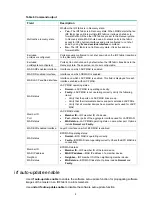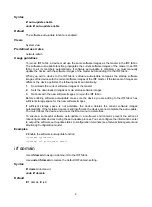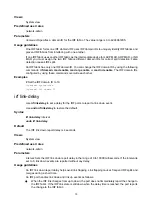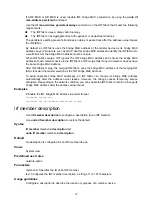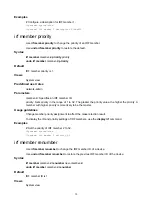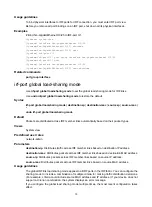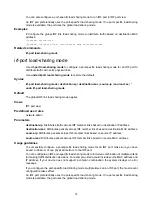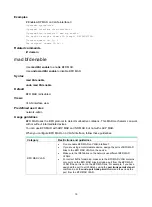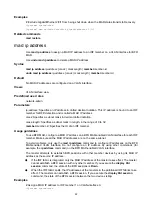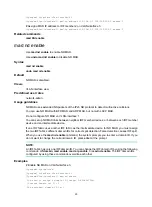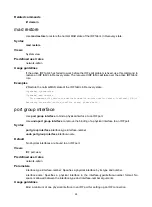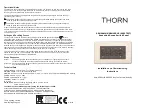
21
NOTE:
An IRF fabric has only one IRF domain ID. You can change the IRF domain ID by using the following
commands:
irf domain
,
mad enable
,
mad arp enable
, or
mad nd enable
. The IRF domain IDs
configured by using these commands overwrite each other.
Examples
# Enable LACP MAD on Bridge-Aggregation 1, a Layer 2 dynamic aggregate interface.
<Sysname> system-view
[Sysname] interface bridge-aggregation 1
[Sysname-Bridge-Aggregation1] link-aggregation mode dynamic
[Sysname-Bridge-Aggregation1] mad enable
You need to assign a domain ID (range: 0-4294967295)
[Current domain is: 0]: 1
The assigned domain ID is: 1
MAD LACP only enable on dynamic aggregation interface.
Related commands
irf domain
mad exclude interface
Use
mad exclude interface
to exclude a port from being shut down when the IRF fabric transits to
the Recovery state upon detection of a multi-active collision.
Use
undo mad exclude interface
to restore the default MAD action on a port.
Syntax
mad exclude interface interface-type interface-number
undo mad exclude interface interface-type interface-number
Default
All ports except the IRF physical interfaces and console ports shut down when the IRF fabric transits
to the Recovery state.
Views
System view
Predefined user roles
network-admin
Parameters
interface-type interface-number
: Specifies a port by its type and number.
Usage guidelines
If a port must be kept in up state for special purposes such as Telnet connection, exclude the port
from the shutdown action. As a best practice to avoid incorrect traffic forwarding, do not exclude any
ports except for the ports used for Telnet and MAD.
The ports that have been shut down by MAD come up when the member devices reboot to join the
recovered IRF fabric. If auto recovery fails because the current master fails or any other exception
occurs, use the
mad restore
command to manually recover the member devices and bring up the
ports.


